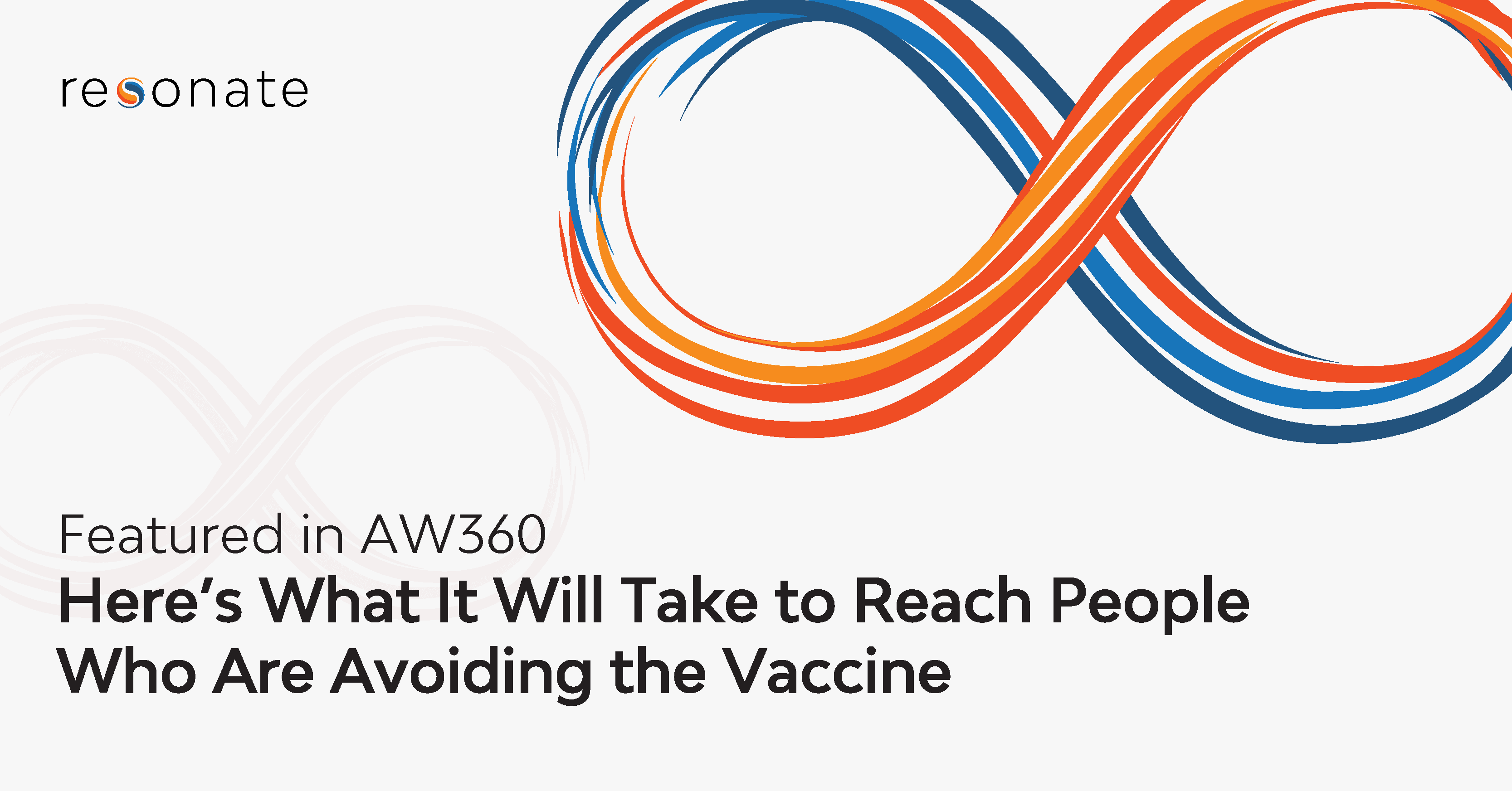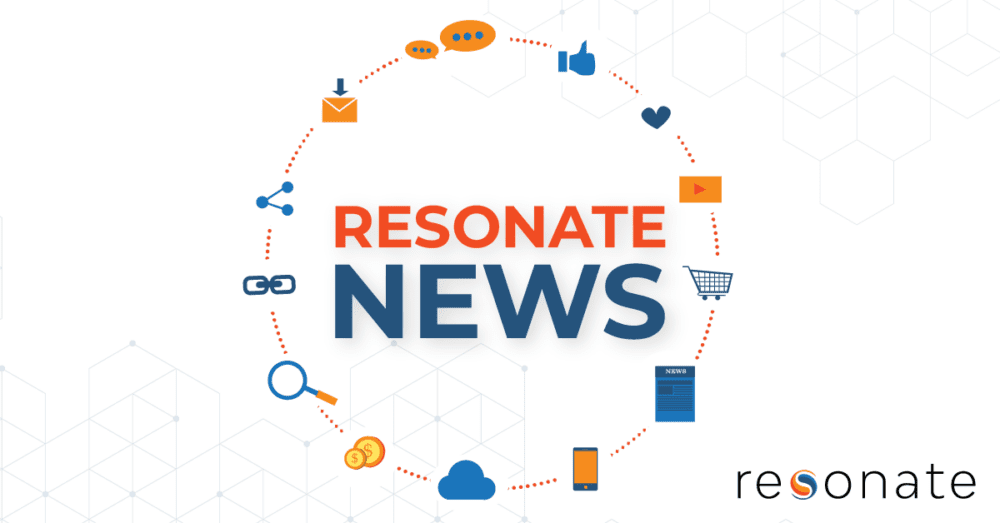Key Insights for Vaccination Campaigns
COVID-19 vaccines have been rolling out across the U.S. for six months now, but the real work for vaccination campaigns is just beginning. As supply eclipses demand, all eyes are turning to Americans who have expressed hesitancy or outright resistance to being vaccinated against COVID-19.
According to a just-released vaccine readiness report from consumer intelligence firm Resonate, 65 percent of Americans today say they’re likely or very likely to get a COVID-19 vaccination as soon as it’s available to them, if they haven’t already. Of the remaining 35 percent, 21 percent (45.9 million Americans) are hesitant to be vaccinated, saying they’re only “slightly” or “moderately” likely to get it. Meanwhile, 14 percent (31.9 million) are straight-up resistant, saying they’re “not at all likely” to get the vaccine.
Notably, these numbers have shifted over time, demonstrating the power of time and messaging on the topic of the COVID-19 vaccines. Between December and April, the number of consumers who say they’re completely likely to get the vaccine rose 106 percent, while the number who said they’re not likely at all to get it fell 29 percent.
So, what do we know about hesitant and resistant Americans? Who are they, and what insights can campaigns glean to better communicate with them at this key juncture for vaccination campaigns?
Read the full report: Moving the Needle: How Americans feel about vaccines + 5 ways to reach the vaccine-hesitant and -resistant
5 Tips for Vaccination Campaigns to Reach Hesitant Americans in a Meaningful Way
1. Appeal to Their Core Values and Drivers
People’s personal values influence their everyday decisions, opinions and behaviors, and Resonate’s analysis uncovered useful distinctions among the vaccine-hesitant and resistant that are applicable to how organizations approach them on the topic of vaccines.
For example, the hesitant hold others’ opinions of them in high regard, so it’s worth emphasizing the social clout many are receiving for doing their part in getting vaccinated. Meanwhile, the resistant are devoutly religious, so organizations might want to consider working with churches to host vaccination sites and emphasize that vaccines are just as much about protecting your neighbor as yourself.
Nearly half of both groups have children, and many of their top societal and charitable concerns involve children. Thus, it could be useful to feature messaging about getting kids back to full-time schooling, childcare and socialization. Likewise, compared to the average American, the hesitant are 28 percent more likely to be single and 32 percent more likely to be driven by romantic love. Messaging about returning to the in-real-life dating scene may push these folks to get their shot.
2. Reach Them on the Right Media Channels
For maximum effectiveness and efficiency of media spend, vaccination campaigns need to ensure they’re catching hesitant and resistant audiences in the right places. In this regard:
- While 28 percent of the resistant spend 10 hours or less online per week, 26 percent of the hesitant spend 40+ hours online.
- The vaccine-hesitant audience is significantly more likely than the average American to watch TV on a phone, tablet, computer or streaming device than standard TV. The vaccine-resistant audience mostly watches standard TV or through a streaming service.
- The hesitant are 61 percent more likely than the average American to be on Twitch, 46 percent more likely to be on TikTok, and 32 percent more likely to be on Reddit and Snapchat. The resistant audience mostly uses Facebook, YouTube, Instagram and Twitter—but 23 percent of them are still on Snapchat and 13 percent are on TikTok. It’s also worth noting that 60 percent of them trust the news and information they see on Facebook to a moderate or large extent.
3. Ease Their Health Concerns
Unsurprisingly, both groups are far less likely to believe vaccines, in general, are important. They’re also far less likely than average to trust a doctor’s recommendations, so consider delivering messaging through non-doctor voices.
Nearly 5 percent of all Americans are avoiding the vaccine due to side effects, and these audiences are more likely to not refill a prescription due to side effects. In this regard, it could be useful to emphasize the mildness of side effects in comparison to getting COVID-19, and how not everyone experiences side effects.
The hesitant are 46 percent more likely to treat health concerns by using social media to discuss health conditions and find communities of others with similar issues. Can vaccination campaigns deploy volunteers to seek out and post in vaccine-hesitant and vaccine-resistant social media groups?
4. Consider Using Non-Government Voices to Deliver Messaging
Both audiences are less politically active than the average American, and a large chunk of them feel sour toward the government. So best to keep this in mind: They might not listen to a message coming from a government figure.
5. Draw Them to Vaccination Sites Based on Their Shopping Preferences
The elements of shopping experiences that lure in these groups may infer details that could draw them to a vaccination site:
- About a third of the vaccine-hesitant and a quarter of the resistant research a product with many sources before buying.
- The hesitant are 27 percent more likely than the average American to shop based on convenience, so emphasizing the number of nearby vaccination sites in their area and offering transportation for those not near a site could be highly effective strategies.
Real-time insights have never been quite as important to a cause as they are today. To move the needle on vaccination in the U.S., organizations will need to stay on top of shifting consumer sentiments among the hesitant and resistant—and be able to target individuals where and when they are most receptive to information.
An earlier version of this article is featured in AW360.
Read the full report: Moving the Needle: How Americans feel about vaccines + 5 ways to reach the vaccine-hesitant and -resistant
Learn more about Resonate’s deep, real-time, actionable consumer insights
Beyond vaccination campaigns, our AI-driven data and easy-to-use platform help organizations discover and connect with their audience at scale. Request a demo today and check out our post-cookie resource center showing how the path to consumer insights is still viable and strong – even when it’s not paved with cookies.

